It may feel like your students never stop talking — until it’s time for a class discussion, and silence takes over.
To help you avoid these moments, we’ve created a step-by-step class discussion checklist to help you maximize discussion opportunities. Try out these tips in a dynamic Kialo Edu discussion to foster meaningful conversation with your students that boost their critical thinking skills. Best of all, Kialo discussions are free and always will be, so give it a go today!
Step 1: Set a clear discussion goal by framing the discussion
Success begins with properly setting up the discussion. This gives students a clear understanding of the discussion parameters from the outset.
Start by setting a clear goal to help frame the discussion. This may include asking students to solve a problem, reach a judgment, or make connections between ideas.
Then, choose the right discussion question. While a closed question limits discussion opportunities, a question that is too open-ended can result in an unfocused discussion. Using the higher levels of Bloom’s Taxonomy can help you create questions that promote discussion.
You can check out our Topic Library for some inspiration in creating your discussion questions, or simply use the templates there for a ready-to-go discussion!
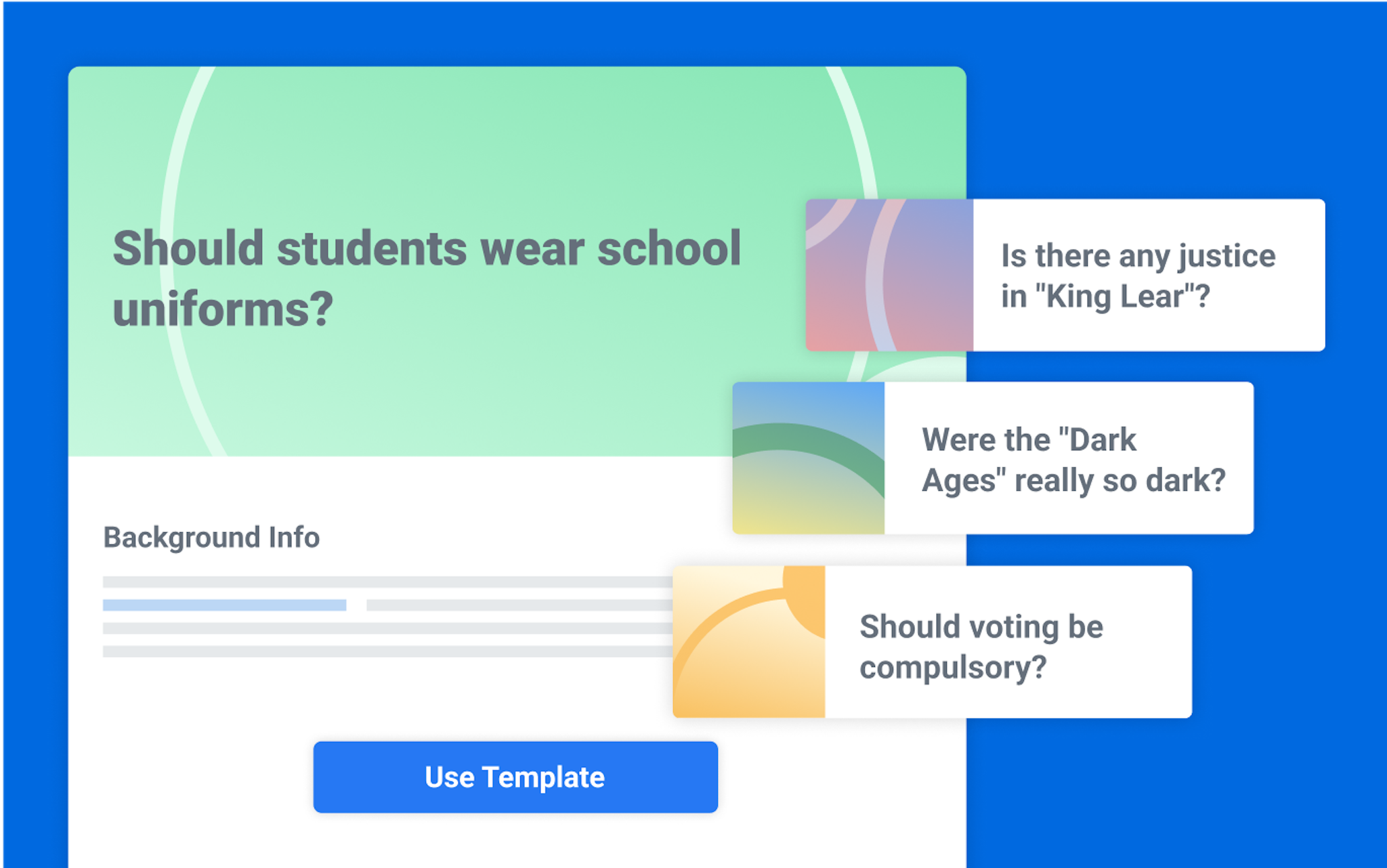
Step 2: Set a time frame to maximize activity time
One lesson may be sufficient, or the discussion may form part of a longer-term project. Whatever the projected time frame, holding discussions online can maximize the time available, as little preparation is required. Educators can also easily monitor student contributions and provide targeted feedback.
With Kialo discussions, you can easily start and stop discussions to give students a clear time limit to contribute, as well a leave targeted feedback on their claims and the overall discussion.
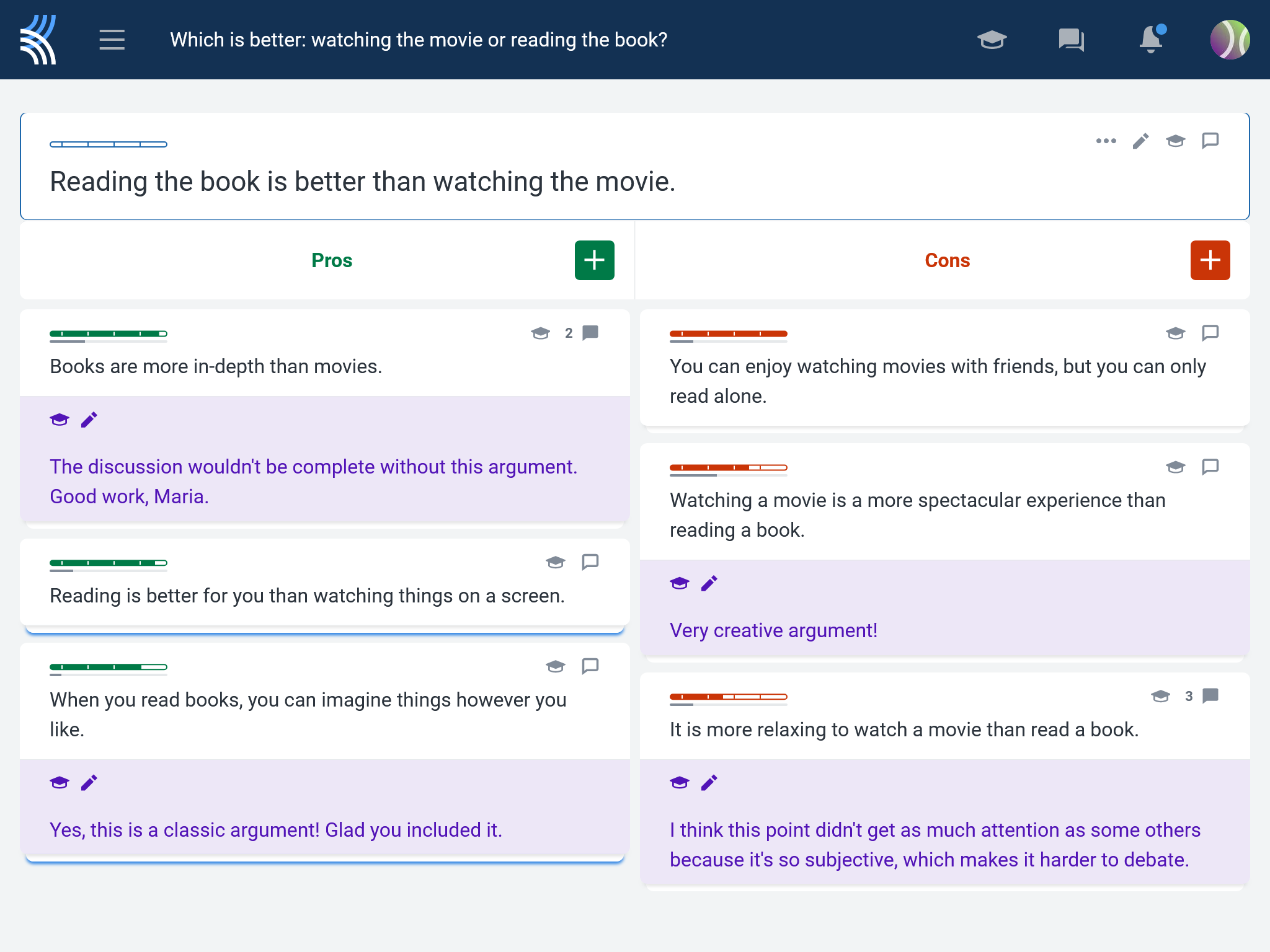
Step 3: Create ground rules to set boundaries
Work with students to create ground rules for discussion. Once there are clear boundaries in place, everyone can feel more confident in communicating their ideas, particularly when focusing on controversial topics.
Step 4: Break down discussion questions to focus student contributions
Open-ended discussion questions can be daunting for some students. Breaking questions down into manageable steps allows students to focus on key points and structure their contributions.
Provide students with these questions prior to the discussion and ask them to research the relevant topics. This way, students will be able to generate ideas and find supporting evidence in advance, leading to more confident communication.
Step 5: Ensure students are collaborating during discussions

Collaboration within discussions allows students to develop active listening and questioning skills and explore multiple perspectives.
Students might prepare for discussions individually, and then collaborate as a class to work toward the goal. Alternatively, educators may group students into teams. Each team could work on their own version of the same discussion, or explore a different aspect of the topic.
Grouping students of similar abilities allows them to challenge each other in discussions, whereas mixed-ability groupings allow students to learn from each other. Grouping by confidence level, on the other hand, can maximize discussion participation and prevent more confident students from monopolizing the conversation.
Make collaboration purposeful by allocating students specific roles within teams. Roles could include researcher, fact checker, spokesperson, and summarizer. This will help to ensure all students are active in the discussion.
Step 6: Plan warm-up activities to get students comfortable talking
The next step to a successful discussion is to engage students. Even a carefully organized discussion can suffer from tumbleweed moments, if students are not fully engaged!
Get students comfortable sharing their opinions with ice-breakers, such as debating whether kids should be allowed to eat ketchup or whether pineapple belongs on pizza, before they dive into the main discussion.
Some students may require additional support to engage with a topic, even after warm-up activities. Here, it can be useful to have students generate some initial ideas at the beginning of the discussion. Sharing these ideas with the class can act as a prompt for struggling students, helping to engage them in the rest of the discussion.
Step 7: Structure the debate to keep discussions focused
To maintain engagement and keep discussions focused, provide a structure for the discussion. Begin with starter claims and ask students to develop related sub-claims, supported by sources. As the discussion progresses, students will be able to see how their ideas fit into the overall discussion structure.
Step 8: Ensure content retention by asking students to review and summarize discussions
Holding regular short summaries throughout discussions helps to ensure students are on track to meet the intended goal. This is especially useful when pupils are working in teams, as students with the role of summarizers can take center stage to share the main discussion points so far.
To close discussions, hold a final summary. Recap key points using notes from the discussion to check students’ understanding and address misconceptions. Summarizing will allow students to review and internalize their learning.
Use Kialo Edu to elevate classroom discussions
Take some inspiration from Kialo Edu’s ready-made debate topics categorized by age and curriculum subject to facilitate an engaging discussion with your students — particularly great for remote learners!
Here are some reasons why it’s great to have your next class discussion on Kialo Edu.
1. Clear structure to visualize arguments and reasoning
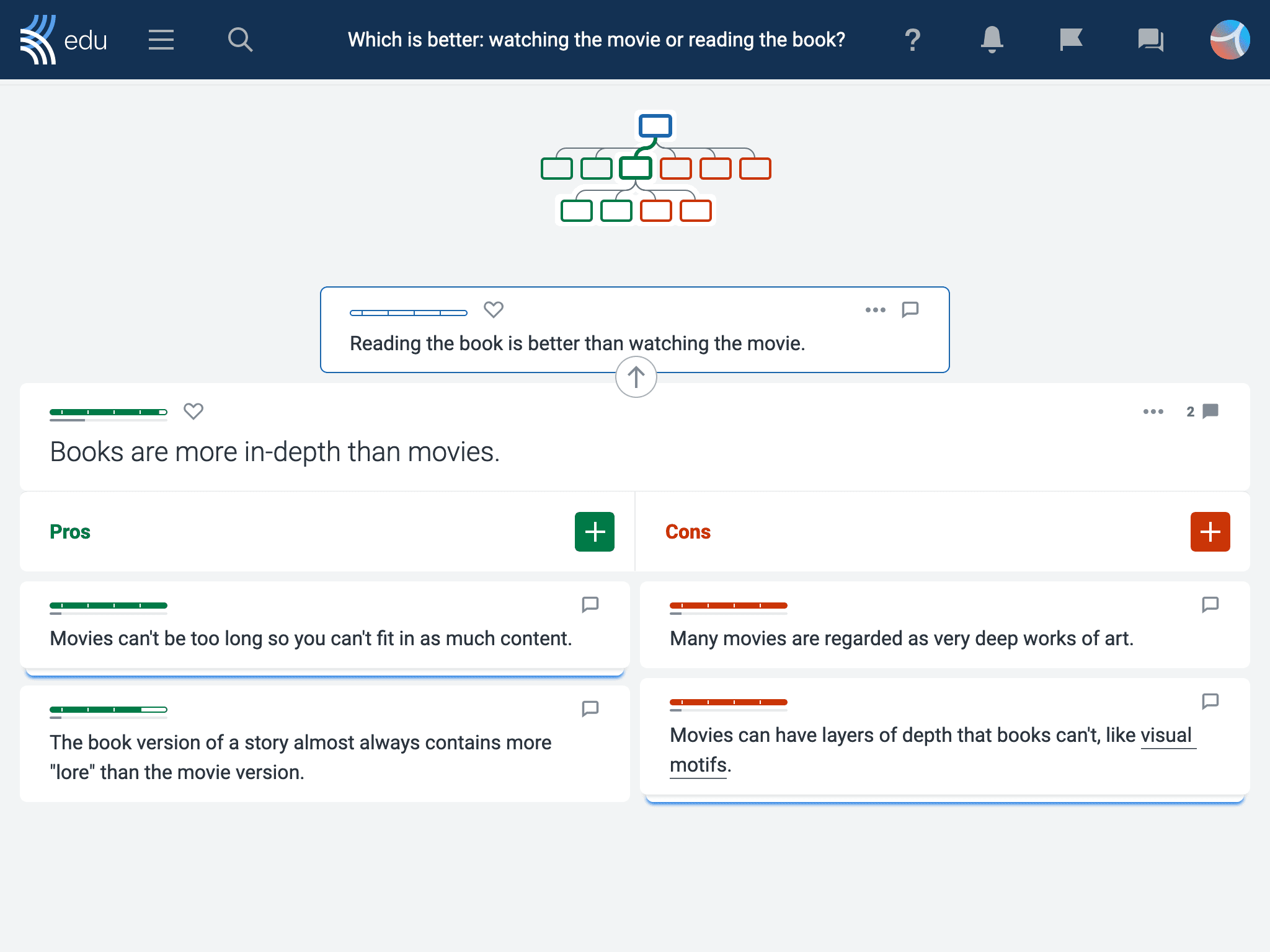
The argument-mapping structure in Kialo discussions provides a clear structure for effective communication. Students are able to visualize the discussion and see where their ideas fit in.
If students have to speak on a topic, the argument map can help students to plan contributions and consider opposing viewpoints.
In verbal discussions, educators can also use the argument mapping structure to keep a record of key points by adding notes to it as discussions progress. This could then be used for a summarizing activity.
2. Easily put students in groups to collaborate on discussions
Encourage collaboration by using the Small Group Mode feature to put groups of students to work on their own copy of a discussion.
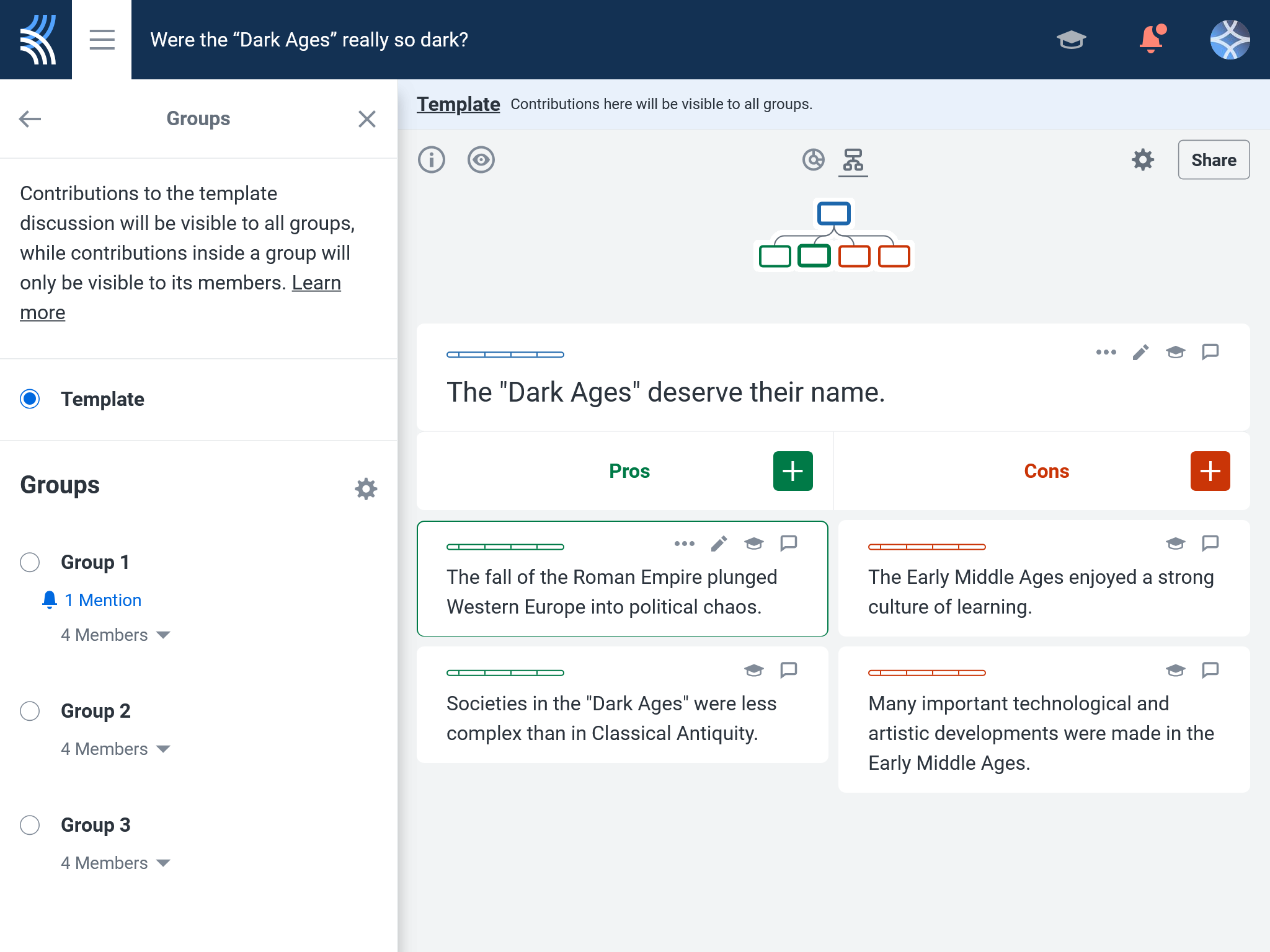
To customize discussions according to your students’ needs, you can customize distinct discussions to allow each group to focus on a different aspect of a topic.
3. Have Anonymous Discussions to encourage student participation
Using Anonymous Discussions, students are able to write and respond to claims under an anonymous username that’s known only to the teacher. This helps shyer students to make honest contributions without the fear of attracting attention from their peers.
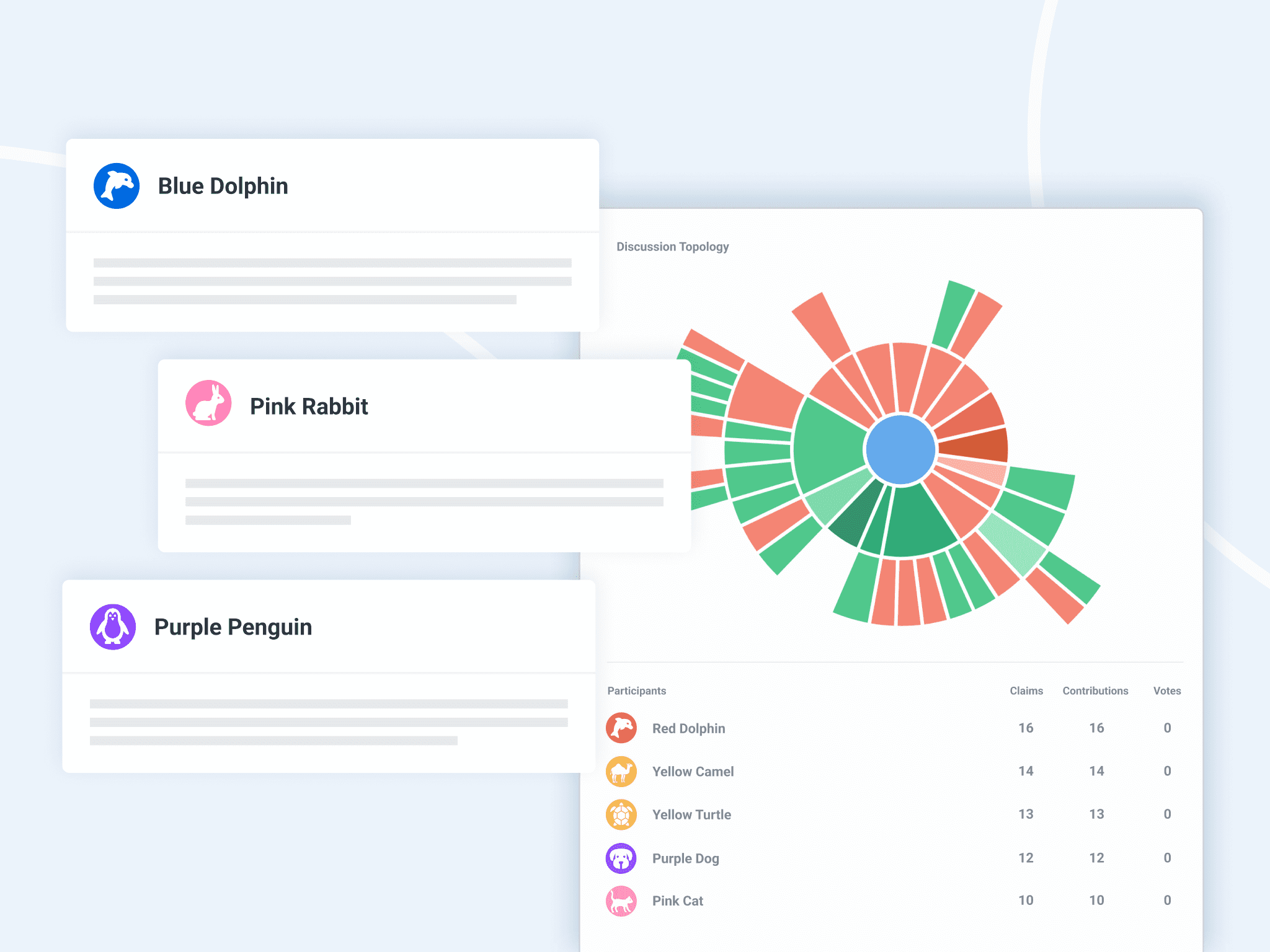
What’s more, anonymous discussions can serve as a planning tool prior to verbal discussions. Students can gain confidence through experimenting anonymously with ideas to see how others respond, making them more likely to engage in the subsequent verbal discussion.
Using our checklist to plan and facilitate class discussions can help to maximize students’ learning by ensuring that discussions are engaging and productive.
We would love to hear how you have used the checklist in your classroom. Contact us at feedback@kialo-edu.com, or on any of our social media platforms, with how your class discussions went!
Check out even more teaching strategies to help you empower your students with the skills they need for discussion success!

